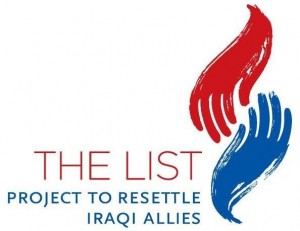In a recent interview published by the State Department, Assistant Secretary of State for Population, Refugees and Migration Ellen Sauerbrey offers a very optimistic report of the current refugee situation and the American response. Among the key questions and answers:
MR. MCCORMACK: Let’s just start off with getting from you a little bit of an overview of where we stand now with respect to Iraqi refugees. I know we’ve set out some goals and we came pretty close to hitting the targets. Could you lay out for us right now where we are with respect to the goals and what we might expect over the next, say, six months to a year in terms of the number of refugees actually getting into the U.S.?
ASSISTANT SECRETARY SAUERBREY: Sure. Our goals, though, are twofold. And the first goal, of course, is assistance to the larger quantity numbers of refugees that will remain in the region, and I’ll come back to that. But in terms of your question about resettlement, we will resettle 12,000 this year. And I have no doubt that we will make that goal.
MR. MCCORMACK: So this — this calendar year we’ll have about 12,000?
ASSISTANT SECRETARY SAUERBREY: Yes. We spent many months putting together a very complicated infrastructure. There are many moving parts in refugee resettlement, including the security clearance process, and getting all the pieces in place — the diplomatic clearances, training the people that do the screening — took time to get up and running, but it’s running pretty smoothly now. And so I have no doubts that we will easily reach 12,000.
In terms of those Iraqis who have helped coalition forces:
MR. MCCORMACK: Let me ask you about the home front here. There are a lot of questions about what our responsibilities are to those Iraqis who work for us, whether it’s for the military or for the State Department, in Iraq. What are we doing to help change the law so that we can meet our obligations to these people who work for us?
ASSISTANT SECRETARY SAUERBREY: Well, we have two ways that those that are affiliated with the U.S. in some way can enter the country. Through the refugee program, which of course, it’s my bureau, whereby what is called a special immigrant visa. There actually are now about 800,000 that have come in on special immigrant visas and, as you know, over 1,600 that have come in through the refugee program.
They are greeted in the United States by a wonderful resettlement program that we have run by voluntary organizations, 365 individual affiliates throughout the country that meet the refugees. And we contract with them to provide initial shelter, household goods, to train new arrivals in the English language, skills training, get them enrolled in — get the children enrolled in school, and most importantly to get them employed. We’re very successful in getting them employed very quickly.
Read the rest of the interview here.
